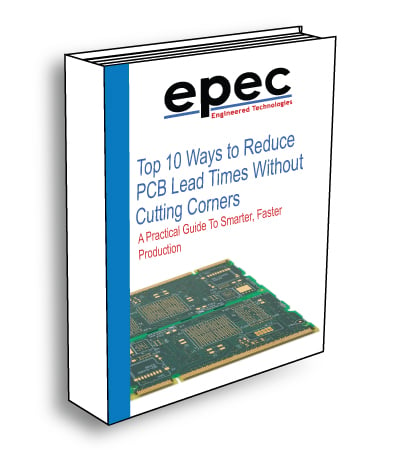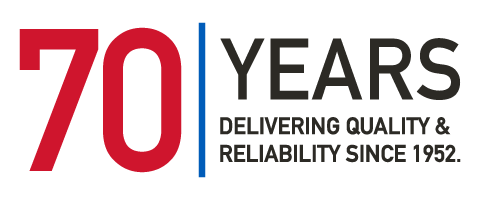ENEPIG Printed Circuit Boards
ENEPIG (Electroless Nickel Electroless Palladium Immersion Gold)
The perfect electronic product device should be as small and light as possible, while containing the maximum amount of electronic functionality and operating at the highest possible speed. To meet these needs, the electronic packaging industry has been driven to develop more and more advanced packaging methods, both by increasing the density of integrated circuits on a single PCB and also by combining multiple functionalities into single, dense packages.
Increased package and interconnection density have driven the evolution of assembly methods from through-hole technology (THT) to surface mount technology (SMT) and have led an increased use of wire bonding to attach devices to PCB substrates. Decreased interconnect pitch and the use of chip scale packaging (CSP) have enabled the increases in device density, while multichip modules (MCM) / system in package (SiP) approaches have allowed integration of functionalities that would be difficult to produce on a single wafer substrate.
When the semiconductor industry has concentrated for many years on increasing the performance of devices by reduction in critical dimensions, until recently, there has been less consideration of the fact that devices in an electronic system must communicate with each other through the packages that contain them. Large I/O requirements and signal transmission quality have emerged as key considerations for the semiconductor packaging industry, as have the assembly process requirements and the final finish of PCB substrates used to achieve reliable interconnections both within IC packages and for the second level packaging of devices onto PCB substrates.
The below describes the key factors affecting interconnection reliability, especially focusing on the performance of finishes for gold wire bonding applications.
Surface Finish Options for Wire Bonding
While electrolytic nickel gold provides excellent gold wire bonding performance, it suffers from three major deficiencies, each of which is a major barrier to its use in leading edge applications:
- The process cost is high, driven by to the relatively high gold thickness required
- At the higher gold thicknesses normally used, solder joint reliability may be reduced due to the formation of tin-gold intermetallics. Should the finish be combined with a second final finish, more suitable for soldering applications, additional costs from secondary imaging operations are also incurred
- The electrical bussing required to make connections to the features during the plating process limit the feature densities that can be achieved
Here are some ENEPIG Benefits for Gold Wire Bonding.
These limitations have provided an opening for electroless process options. These include electroless nickel immersion gold (ENIG), electroless nickel electroless gold (ENEG) and electroless nickel electroless palladium immersion gold (ENEPIG).
Of these three options, ENIG is not generally considered to have an acceptable process window for high reliability gold wire bonding (although it has been used for some lower end consumer applications) and ENEG suffers from many of the same process cost issues as electrolytic nickel gold, with additional challenges from operating more complex electroless gold processes.
While electroless nickel electroless palladium immersion gold (ENEPIG) first emerged in the late 1990's, its market acceptance was delayed by the very volatile price of palladium metal around 2000. However, in more recent years, the market demand has shown strong growth as users have begun to appreciate the potential of ENEPIG to address many of the new packaging reliability needs, while also meeting lead free / ROHS requirements.
Apart from the advantage of packaging reliability, the cost of ENEPIG has now become a positive consideration. With recent increases in the price of gold price to levels above US$800 per troy oz, the production cost of electronic device that required thick gold electroplating becomes extremely difficult to control. Since the cost of palladium metal (US$300 per troy oz) has remained relatively low in comparison to gold, an opportunity for cost saving by replacement of gold with palladium is now available.
Comparison of Final Finishes
In the existing market, there are 4 primary lead-free final finishes for PCBs which are suitable for assembly of fine pitch QFP / BGA devices:
- Immersion Tin
- Immersion Silver
- Organic Solder Preservatives (OSP)
- Electroless Nickel Immersion Gold (ENIG)
The table below shows a comparison between these four final finishes and ENEPIG. None of the four primary final finish options is perfect for lead-free assembly, due to a variety of different concerns including multiple reflow cycle capability, shelf life before assembly and wire bond capability. In contrast, ENEPIG shows substantial advantages combining excellent shelf life, solder joint reliability, gold wire bondability and usage as a contact surface.
The protection of the electroless nickel interface with the formation of a thin electroless palladium layer, prior to immersion gold, eliminates the potential for excessive gold attack on the electroless nickel surface.
Comparison of Final Finish Performance
| Characteristics | OSP | ENIG | ENEPIG | Immersion Silver | Immersion Tin |
|---|---|---|---|---|---|
| Shelf Life (controlled conditions) | < 12 Months | > 12 Months | > 12 Months | < 12 Months | 3 – 6 Months |
| Handling / Contact with Soldering Surfaces | Must be avoided | Should be avoided | Should be avoided | Must be avoided | Must be avoided |
| SMT Land Surface Planarity | Flat | Flat | Flat | Flat | Flat |
| Multiple Soldering Cycles | Fair to good | Good | Good | Fair to good | Fair to good |
| No Clean Flux Usage | PTH/via fill concerns | No concerns | No concerns | No concerns | No concerns |
| Solder Joint Reliability | Good | Good process control required to avoid "black pad" | Good | Interfacial microvoid concerns | Good |
| Gold Wire bonding | No | No | Yes | No | No |
| Electrical Test Probing | Poor, unless solder applied during assembly | Good | Good | Good | Good |
| Corrosion Risk after Assembly | Yes | No | No | No | Yes |
| Contact Surface Applications | No | Yes | Yes | No | No |
| Total Coating Thickness (micron) | > 0.15 | u 0.08 – 0.13 Ni 3.0 – 6.0 |
Soldering: Au 0.03 – 0.05 Pd 0.05 – 0.1 Ni 3.0 – 5.0 Wire bonding: Au 0.07 – 0.15 Pd 0.1 – 0.15 Ni 3.0 – 5.0 |
0.05 – 0.5 typical | 1.0 – 1.1 |
When we consider the final finish performance in a variety of different assembly methods, it can be seen that ENEPIG is suitable for a wide range of assembly requirements.
Advantages of ENEPIG
The key advantages of ENEPIG, combining both excellent solder joint and gold wire bonding reliability can be summarized in the following points:
- "Black Nickel" free – no possibility of grain boundary corrosion of nickel surface by immersion gold
- Palladium acts as an additional barrier layer to further reduce copper diffusion to surface, thus ensuring good solderability
- Palladium completely dissolves into solder, without leaving an excessively high P% rich interface, exposing an oxide-free nickel surface allowing reliable formation of Ni/Sn intermetallic
- Withstands multiple lead-free reflow soldering cycles
- Demonstrates excellent gold wire bondability
- Process costs substantially lower than electrolytic nickel gold or electroless nickel electroless gold
Rohm and Haas Electronic Materials LLC is a global supplier of a comprehensive range of final finishes, including pretreatment chemistries, electroless nickel, electroless palladium and immersion gold and tin products.
See the below Rohm and Haas data sheets for more information.
- Aurolectroless™ SMT 525G Immersion Gold
- Acid Cleaner PC
- Duraposit™ SMT 88.pdf
- Ronamerse™ SMT Catalyst CF
- Pallamerse™ SMT 2000
Upgrade to ENEPIG
The future-proof surface finish for optimal reliability and cost-efficiency in your electronics assembly. Contact us to learn more and get a quote today.
Request a Quote Request Design Support Request More Information



